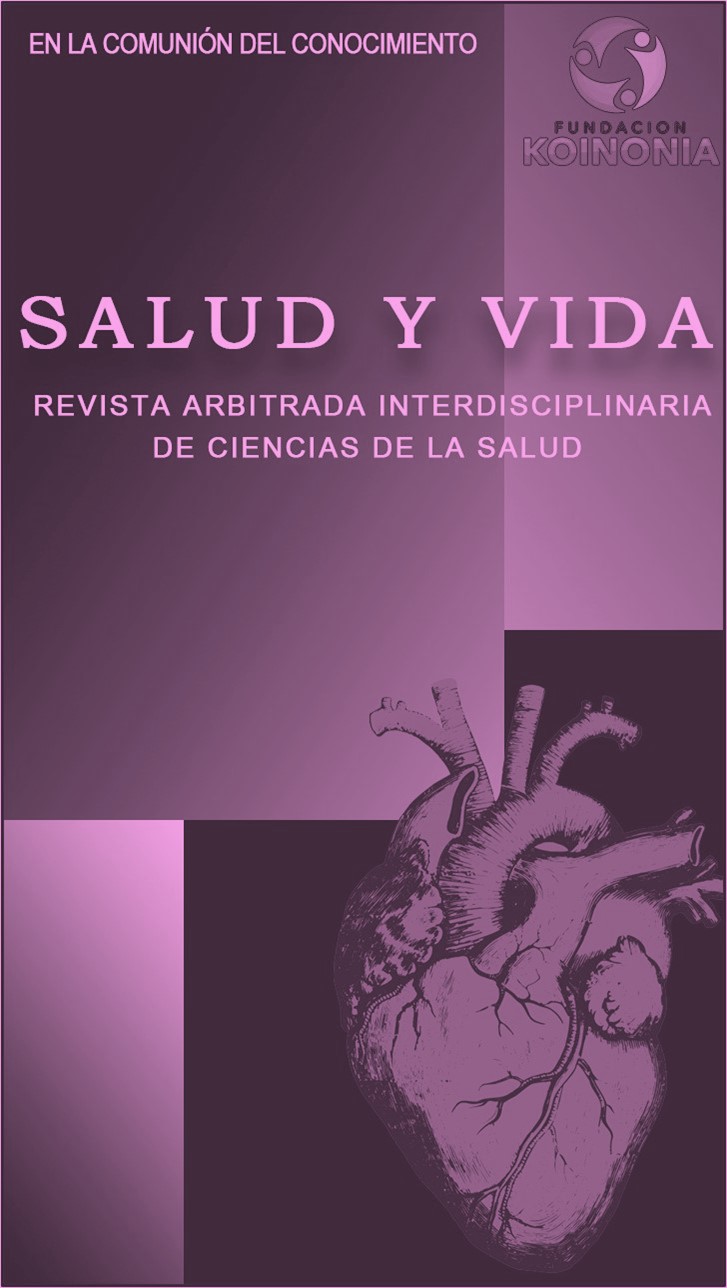Current overview of tooth intrusion with miniscrews in anterior deep bite
DOI:
https://doi.org/10.35381/s.v.v8i2.4262Keywords:
Malocclusion, open bite, malocclusion, angle class II, (Source: DeCS)Abstract
Objetive: To evaluate the efficacy of microimplants for tooth intrusion in patients with skeletal class II and anterior deep bite. Methods: A review was performed in PubMed and Epistemonikos between 2013 and 2023. Thirteen relevant studies were selected for analysis. Results: The results showed that microimplants, placed between the maxillary central and lateral incisors with a force of 30 grams per side, can cause root resorption. This underlines the need for careful management of the applied force and the implementation of standardized protocols to minimize risks and optimize results. Conclusions: Dentofacial esthetics, especially the smile, is central to the demand for orthodontic treatment because of its impact on interpersonal perception and emotional well-being. Deep bite, characterized by excessive coverage of the maxillary incisors over the mandibular incisors, requires a careful approach to treatment to avoid complications such as root resorption.
Downloads
References
Gomaa N, Fakhry N, Elmehy G, Montasser M. Smile changes after intrusion of maxillary incisors with temporary anchorage devices (TADs) or accentuated compensating curve arch wire. Indian Journal of Dental Research. 2019;30(4):531-538. https://doi.org/10.4103/ijdr.IJDR_332_17
Shakti P, Singh A, Purohit A, Shah N. Maxillary Incisor Intrusion Using Mini-Implants and Conventional Intrusion Arch: A Systematic Review and Meta-Analysis. Turkish Journal of Orthodontics. 2022;35(2):150-156. https://doi.org/10.1038/s41380-018-0271-6
Kim JS, Park JH, Heo S, Chae JM. Biomechanical and clinical considerations in deep bite treatment using temporary skeletal anchorage devices. Journal of the World Federation of Orthodontists. 2024;13(1):10-17. https://doi.org/10.1016/j.ejwf.2023.12.004
Ramos Montiel RR. Theoretical epistemic foundation of the maxillofacial cranio-cervico diagnosis [Fundamento teórico epistémico del diagnóstico cráneo-cérvico maxilofacial]. Revista Mexicana de Ortodoncia. 2019;7(4):180-182. https://n9.cl/s6qf2
Vela-Hernández A, Gutiérrez-Zubeldia L, López-García R, García-Sanz V, Paredes-Gallardo V, Gandía-Franco JL, Lasagabaster-Latorre F. One versus two anterior miniscrews for correcting upper incisor overbite and angulation: a retrospective comparative study. Progress in Orthodontics. 2020;21(1). https://doi.org/10.1186/s40510-020-00336-2
Sosly R, Mohammed H, Rizk MZ, Jamous E, Qaisi AG, Bearn DR. Effectiveness of miniscrew-supported maxillary incisor intrusion in deepbite correction: A systematic review and meta-analysis. In Angle Orthodontist. 2020;90(2):291-304. https://doi.org/10.2319/061119-400.1
Trelles Méndez JA, Toledo Jimenez JA, Jumbo Alba JD, Iñiguez Pérez MM, Ramos Montiel RR, Ramírez Romero DE. Morfología cefalométrica de la sínfisis del mentón en individuos jóvenes de la ciudad de Quito-Ecuador [Cephalometric morphology of the chin symphysis in young individuals from the city of Quito-Ecuador]. Odontología Vital. 2021;2(2):39-48.
Aras I, Tuncer AV. Comparison of anterior and posterior mini-implant-Assisted maxillary incisor intrusion: Root resorption and treatment efficiency. Angle Orthodontist. 2016;86(5):746-752. https://doi.org/10.2319/085015-571.1
Montiel Ramos RR, Cabrera GC, Urgiles CU, Centeno FJ. Aspectos metodológicos de la investigación [Methodological aspects of the investigation]. Revista Científica de Investigación actualización del mundo de las Ciencias. 2018;2(3):194-211.
Tilekar NR, Swami V, Sabane A, Bhosale V. Comparison of the effects of varying positions of mini-implants on intrusion of maxillary incisors-an In vivo study. Journal of Indian Orthodontic Society. 2018;52(1):35-43. https://doi.org/10.4103/jios.jios_222_17
Atalla A, Fahim F, Aboul Fotouh M, Yehia Foda M, Atalla AI, AboulFotouh MH, Fahim FH, Foda MY. The efficiency of different incisor intrusion methods in the treatment of adult deep bite patients: A systematic review and meta-analysis. 2004;64: https://www.researchgate.net/publication/328410658
Martin JG, Javed F, Rossouw PE, Michelogiannakis, D. Influence of mini-screw implant-assisted intrusion on orthodontically induced inflammatory root resorption: a systematic review. In European Archives of Paediatric Dentistry. 2021;22(3):341-349. https://doi.org/10.1007/s40368-020-00588-w
Reddy S, Jonnalagadda V. Mini-implant assisted gummy smile and deep bite correction. Contemporary Clinical Dentistry. 2021;12(2):199-204. https://doi.org/10.4103/ccd.ccd_630_20
Ramos R, Puebla Ramos L, Palmas SO. Oyen OJ, Cabrera Padrón MI, Espinoza Arias CJ, Pesantez Rodas NS. Biology and Mechanobiology of the Tooth Movement during the Orthodontic Treatment. 2024; https://doi.org/10.5772/intechopen.114016
Parayaruthottam P, Antony V. Midline mini-implant-assisted true intrusion of maxillary anterior teeth for improved smile esthetics in gummy smile. Contemporary Clinical Dentistry. 2021;12(3):332-335. https://doi.org/10.4103/ccd.ccd_425_20
Jung, M. H. Vertical control of a Class II deep bite malocclusion with the use of orthodontic mini-implants. American Journal of Orthodontics and Dentofacial Orthopedics. 2019;155(2):264-275. https://doi.org/10.1016/j.ajodo.2018.08.016
Qamruddin I, Shahid F, Alam MK, Zehra Jamal W. Camouflage of Severe Skeletal Class II Gummy Smile Patient Treated Nonsurgically with Mini Implants. Case Reports in Dentistry. 2014;1-7. https://doi.org/10.1155/2014/382367
Cobos-Torres JC, Ramos R, Ortega Castro JC, Ortega Lopez MF. Hearing Loss and Its Association with Clinical Practice at Dental University Students Through Mobile APP: A Longitudinal Study. Advances in Intelligent Systems and Computing. 2020;10(99):3-17. https://doi.org/10.1007/978-3-030-35740-5_1
Published
How to Cite
Issue
Section
License
Copyright (c) 2024 Natalia Alejandra Gavilanes-Bayas, Christian David Zapata-Hidalgo, Ebingen Villavicencio-Caparo

This work is licensed under a Creative Commons Attribution-NonCommercial-ShareAlike 4.0 International License.
CC BY-NC-SA : Esta licencia permite a los reutilizadores distribuir, remezclar, adaptar y construir sobre el material en cualquier medio o formato solo con fines no comerciales, y solo siempre y cuando se dé la atribución al creador. Si remezcla, adapta o construye sobre el material, debe licenciar el material modificado bajo términos idénticos.
OAI-PMH: https://fundacionkoinonia.com.ve/ojs/index.php/saludyvida/oai.









